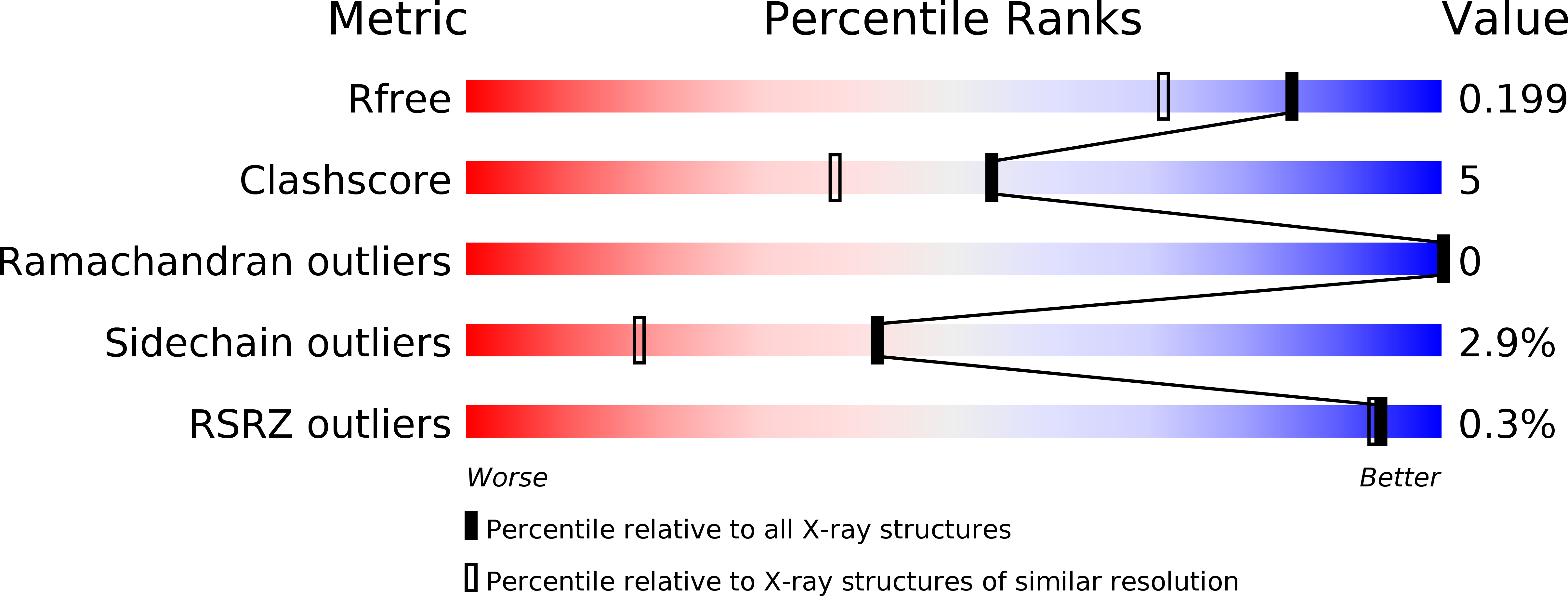
Deposition Date
2018-02-27
Release Date
2018-04-25
Last Version Date
2024-10-16
Entry Detail
PDB ID:
5ZE8
Keywords:
Title:
Crystal structure of a penta-heme cytochrome c552 from Thermochromatium tepidum
Biological Source:
Source Organism:
Thermochromatium tepidum (Taxon ID: 1050)
Method Details:
Experimental Method:
Resolution:
1.60 Å
R-Value Free:
0.19
R-Value Work:
0.15
R-Value Observed:
0.15
Space Group:
C 1 2 1


